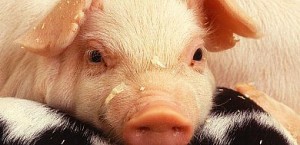WEST LAFAYETTE, Ind. — U.S. live-hog and futures prices have fallen in recent weeks as gas prices have soared, budget sequestration has threatened to furlough federal meat inspectors and global markets have reduced exports.
Purdue Extension agricultural economist Chris Hurt said economists and producers had been hopeful that prices would return to at least break-even this spring. But a $9-per-hundredweight drop in live-hog prices and a $7.50-per-hundredweight drop in futures prices since the beginning of February has quelled some of the optimism.
Weakened demand
“Price weakness is coming from demand concerns,” Hurt said. “The first of those concerns is the weakened buying power of U.S. consumers. Unusually high gasoline prices for this time of year and increased payroll taxes since January 1 have reduced the buying power of consumers.”

“If plants were to shut down some days, they wouldn’t buy hogs for those days, thus weakening hog prices,” he said.
Russia banned U.S. pork
The biggest problem has been with pork exports, which account for 23 percent of total U.S. pork production. In February, Russia banned imports of U.S. pork because of concerns over the use of ractopamine, a feed additive that promotes lean muscle in animals raised for meat.
Russia represented 1.2 percent of U.S. pork production in 2012.
Other export woes
The loss of Russian business would not be felt as much by itself due to their small share, but later in February China also announced that they were going to more closely check imports of U.S. pork for ractopamine, Hurt said.
Last year, China’s pork purchases from the U.S. represented 3.4 percent of total U.S. production volume.
In addition to loss of Russian and Chinese markets, the value of the Japanese yen has fallen by 12 percent so far this year and by 16 percent since October. The decline means U.S. pork prices are higher in Japan by similar percentages.
Japan bought 6 percent of the U.S. pork production volume in 2012, making the country the largest U.S. pork buyer.
Industry is struggling
All of the market problems have combined to create an outlook that is less-than-welcome for hog producers struggling to cover high feed prices.
“The current outlook suggests the industry will have to wait until late summer for break-even conditions when feed prices can decline if more normal corn and soybean crops develop,” Hurt said.
Hog prices are expected to only average about $66 in the second quarter, with costs of production near $70 per live hundredweight, Hurt said. With lower corn and soybean meal prices, late-summer production costs could come down to the $66 mark.











